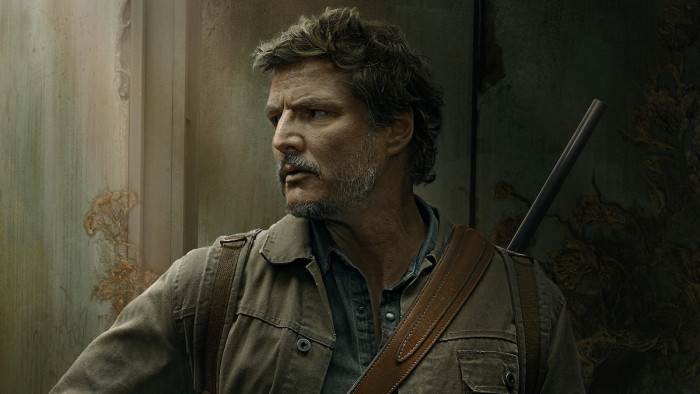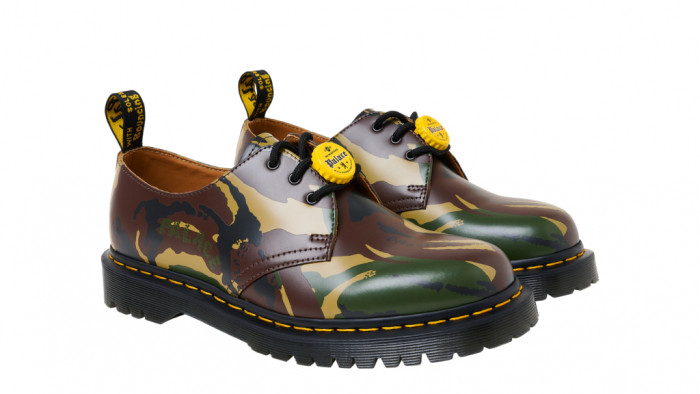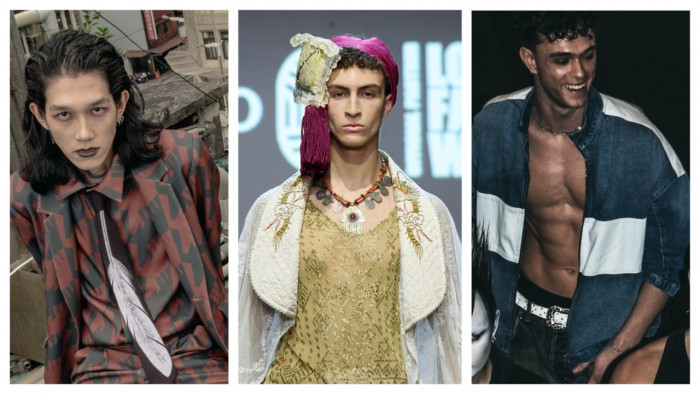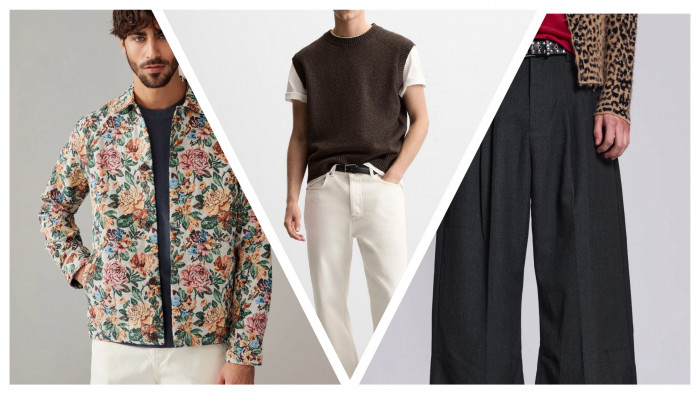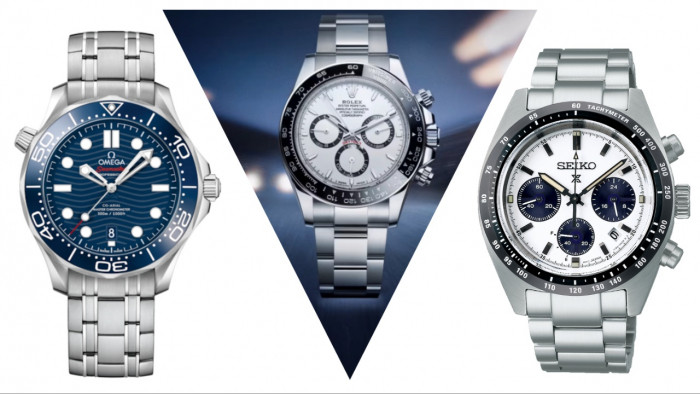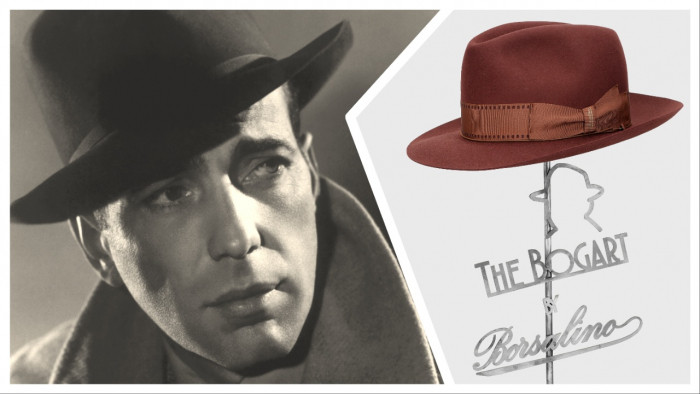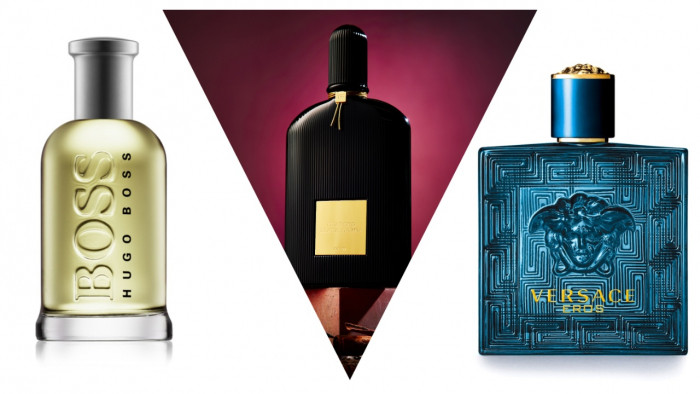Tommy Hilfiger has earned his reputation as a US national treasure through sheer hard work and the belief that fashion should not be elitist. ShortList Mode’s editor Adrian Clark caught up with the legendary designer in California on the eve of his Hollywood flagship opening
Everything about the Tommy Hilfiger brand is positive. Its signature patriotic colour palette of red, white and blue. Its mantra of high fashion for the masses. The commitment to charitable initiatives. The inclusion of any class, creed and ethnicity, as played out in its advertising campaigns that feature a fictitious Hilfiger ‘family’. It couldn’t be more closely aligned with the idealistic ‘life is what you make of it’ American Dream. It is this optimistic and indiscriminate point of view, coupled with an understanding of what men, women and children want to wear, that has made Hilfiger, alongside Ralph Lauren and Calvin Klein, one of America’s greatest living designers. The 61-year-old is an icon, the stories about him much-told, from his rags-to-riches background to his aid for communities all the way from Africa to the New York ghettos, along with his impressive art collection and music industry pals.
Upon arriving in Los Angeles, on almost every street corner and billboard en route from LAX to the Beverly Hills Four Seasons hotel, the Hilfiger ‘family’ stare down at me, photographed in front of the ‘Hollywood’ sign that has been morphed, tongue-in-cheek, to say ‘Hilfigers’. My first impression is ‘what an ego’. An easy mistake to make until you meet Mr Hilfiger and realise that, while he likes to court controversy with his advertising, the underlying message is not take yourself too seriously.
That’s not to say he doesn’t know about glitz, as Hilfiger’s PR tells me: “Tomorrow after you, there will be a party at Soho House. Alicia Keys will be playing and we are expecting Jennifer Lopez, Katy Perry and Jay-Z.” The focus of Hilfiger’s visit to the city is the opening of a new store on Robertson, where there will be the unveiling of a new collection called ‘Surf Shack’. This takes its inspiration from laidback, West Coast, beachcomber styling. The City Of Angels is one of Hilfiger’s favourite places to visit, and I am certainly not complaining.
Which three words describe Hilfiger the brand?
Preppy, classic, cool.
Which three words describe Hilfiger the man?
American, thoughtful, happy.
When did you realise fashion was your calling?
In 1969, when I became obsessed with rock groups and how they looked.
Which memories from your upbringing have attributed to Tommy the man we see today?
I was brought up to care about those in need. My mother had nine children, and we were always reaching out to others who were less fortunate. We were taught to share food, clothes… whatever we possibly could.
Was it hard to stand out in such a large family?
I was the oldest boy. I became a sort of father figure.
You travel a lot, where do you call home?
New York.
Do you feel a conflict of interests being a global brand operating in the exclusive luxury sector?
I think we are an inclusive brand, and we made it that way from the beginning. We are in premium positioning, and I’ve always wanted to pass on affordability and wearability with aspiration to my customers. That is very important to me.
Would you describe yourself as a designer or a businessman? How do you divide your work?
Both. And I would say now it is 50/50.
Is there a generic ‘Tommy’ man?
We have a lot of different customers; athletes, architects, teenagers. We have all different types.
When did you realise Hilfiger could become an internationally recognised household name?
About five years in. We had a lot of interest from people all over the world. We had launched in New York and Miami, expanded to LA, and had people in London, Florence and Rome who were interested.
What sets quintessentially British preppy style from collegiate US Ivy League style?
Authenticity [laughs]. British prep is the real thing – we altered it. We broke all the rules of prep and made it very casual.
How has the brand changed?
Originally, it was going to be an American brand, for men, in America. Then it evolved into a global lifestyle brand. As daunting as it seems, it worked.
In the Hilfiger design recipe, what parts of conservative and rebel strike a perfect balance?
It’s more conservative some seasons, more edgy others, but it always has to be a blend of the two.
Why the strong feeling for stripes in your menswear collection this spring?
I always have strong feelings for stripes, it’s just that we amplified it this season. It just felt right. We have had a lot of checks and plaids before, and have returned with them for autumn.
Is collecting art a passion or an investment?
A passion. My favourite artists are Damien Hirst and Marc Quinn from Britain, and Keith Haring, Warhol and [Jean Michel] Basquiat from the US.
Which work of art would you most like to own?
Jasper Johns’ ‘Flag’.
Your latest project, Surf Shack, is a collaboration with contemporary artists on limited-edition surfboards. How did you choose the artists?
We are very involved with pop culture and we have a lot of networking with artists, DJs, musicians and models. Being in New York, you’re in the heart of it. We were looking for people with a relaxed vibe.
Are you interested in music? Who do you like at the moment?
Justin Timberlake, Jay-Z, Katy Perry, Taylor Swift – she’s amazing – and a new artist, ASAP Rocky.
What do you like most and least about being Tommy Hilfiger?
Least – I have to live up to expectations. Most – it has opened doors for other opportunities such as travel, art and meeting interesting people.
Fashion has the ability to give back to society. Which concerns are you most involved in?
Twenty years ago we set up a foundation to help young people in the ghettos of New York City and built them a summer camp. Then we reached out to Aids patients and Evelyn Lauder’s Breast Cancer Research Foundation, and then MS. We are involved in a lot of charity efforts.
Can you tell me about the ‘Americans In Paris’ initiative you are involved with?
We sponsor up-and-coming American designers who benefit from going to Paris to show their collection, with labels such as Creatures Of The Wind and George Esquivel.
If you could start your career again, what would you change?
I would have paid more attention to the business part – I had financial troubles as a result. I would also have built the women’s business earlier.
Do you think you were perceived only as a menswear designer originally, then?
Yeah, it was the same for Ralph Lauren. A lot of designers have that issue. It’s interesting, women such as Stella [McCartney] may not be able to go into menswear easily. Donna Karan’s men’s never really took off. Diane Von Furstenberg can’t do men’s… A lot of women’s design houses can’t do men’s.
What ‘rules’ can men follow to have a stylish edge when dressing for the beach?
Stay away from the Speedos, don’t take yourself too seriously, easy on the oil and don’t be shy to get in the water.
Is there a specific style here in California that you feel is influential?
It’s eclectic, more relaxed than other parts of the world. California is where extreme casual started, where you see Ashton Kutcher or Leo DiCaprio unshaven with old clothes on – almost anti-fashion. They wear sweat pants, flip-flops, a beat-up old T-shirt. It’s an ‘I don’t care’ attitude, but it’s very studied. There are also a lot of tattoos in LA – it may be the tattoo capital of the world.
Do you have any tattoos?
No, but my son has many, many, many. He’s doing it for the whole family.
Hilfiger Tailored launches in autumn. What’s different from the tailoring you currently offer?
It’s more modern and slimmer. I was in London in the Sixties and Seventies and Tommy Nutter [celebrity Savile Row tailor] was dressing a lot of the rock groups and cool people – and he had an irreverent way of dressing himself, so I took that as inspiration.
Did you own a Tommy Nutter suit?
I couldn’t afford one – a suit from him was £100!
You have just opened a new store in LA. Is it different from your other retail outlets?
This is on one floor, much brighter and airier. We have vintage pieces mixed with the collection, something we do in key flagships. We have a team go out and comb through vintage for pieces that work with our DNA.
What a great job… travel the world buying vintage clothes.
Can you imagine how much fun that would be? That’s what I would like to do.



